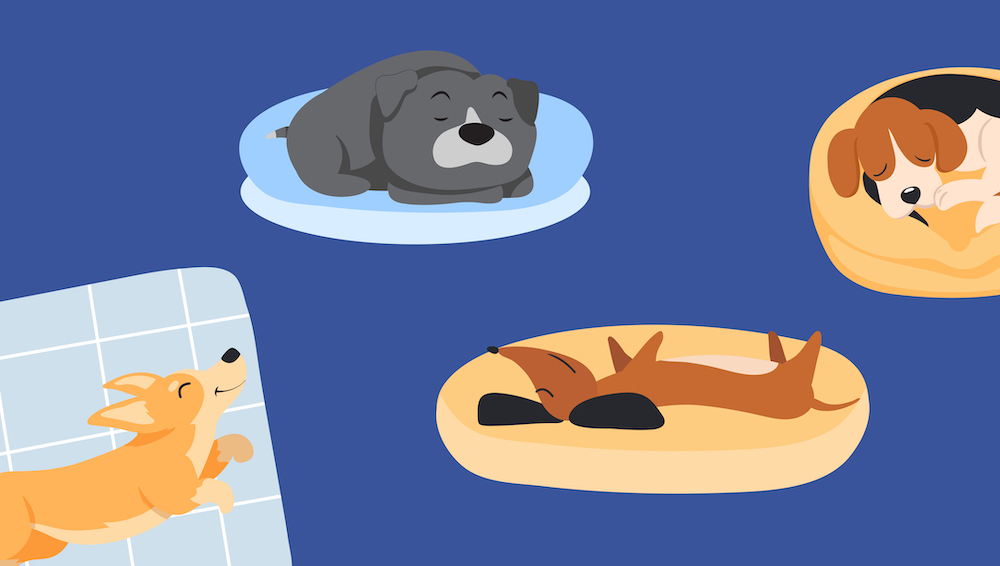
Sprawled out flat, all four paws in the air, curled up tight — it seems like there’s no end to ways dogs catch some zzz’s. But is there any rhyme or reason to a dog’s sleeping position? We quizzed Dr. Danielle Rutherford, DVM, consultant to Bausch & Lomb’s Project Watson, to see what your dog’s sleeping position means.
The Superman
In the Superman sleeping position, your dog is flat on his belly with his back legs stretched out behind him and his front legs stretched out in front. “This is common in young dogs and playful dogs,” says Rutherford. “It often means that they are tired and in need of rest but ready to play if the opportunity presents itself.”
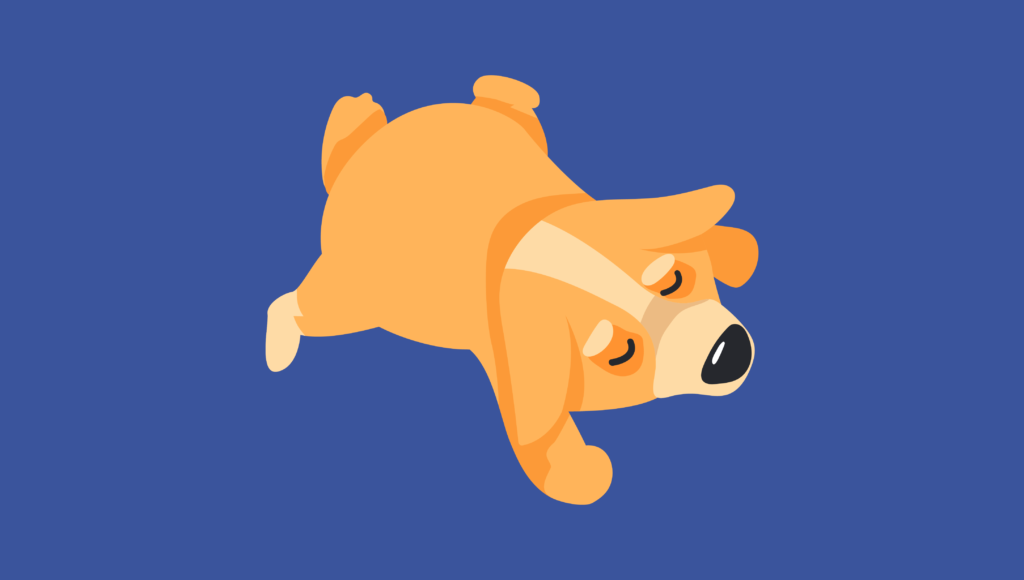
The Donut
Just as the name implies, the donut sleeping position is when a dog sleeps with all of its limbs tucked underneath in a tight little ball. “This can protect a dog who is feeling cold if they are exposed to the elements or in a cold room,” says Rutherford. “It also makes a dog who is anxious feel less vulnerable when getting used to a new environment.”
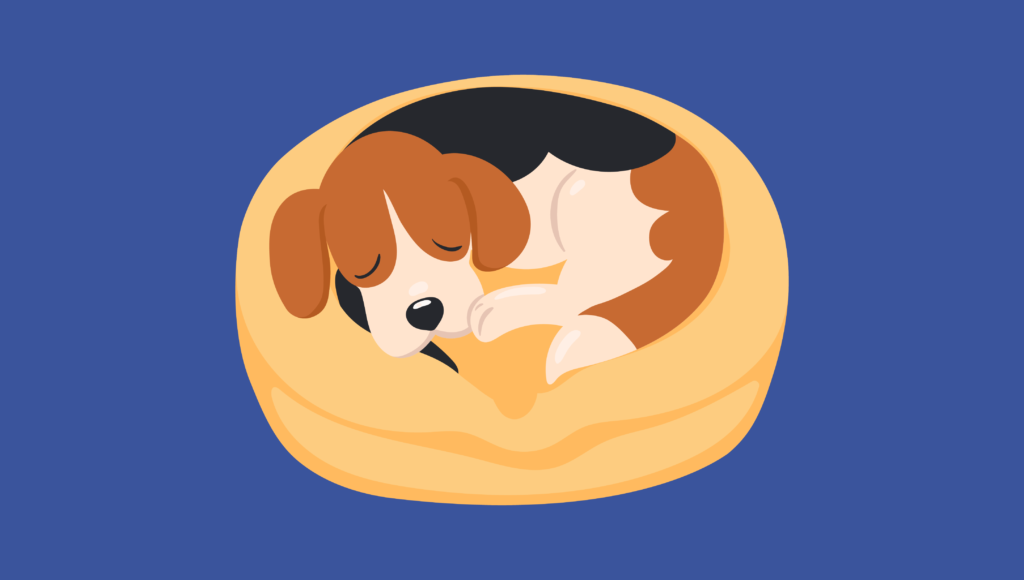
The Lion’s Pose
“This is when a dog sleeps with its head on its front paws,” Rutherford tells Sleepopolis. “Their back legs might be tucked underneath them or out to one side.” The lion’s pose is a resting pose, and often an indication that a dog isn’t in deep sleep. “Once they begin to dream and fall into a deep sleep, dogs will often roll onto their side,” says Rutherford.
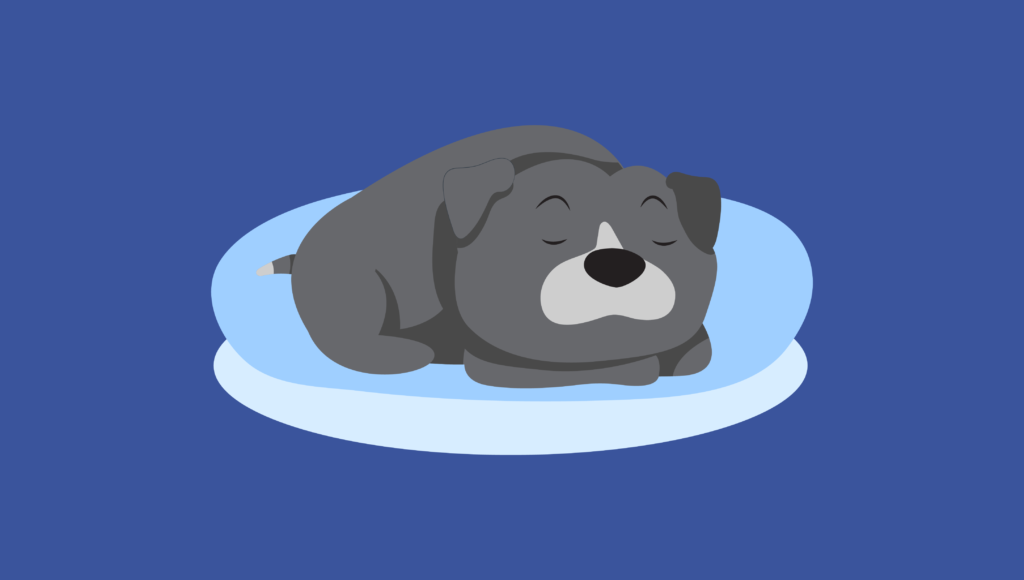
All Cuddled Up
Dogs who cozy up to their owner may be looking for comfort. “This often shows that they feel a bond with the owner or other pet and are looking to form a connection,” says Rutherford. “This also means that they are very comfortable and trusting of the person or other pet.” It’s a common sleeping position for puppies, who love piling up with their siblings to snooze, but it can continue into adulthood when dogs feel close to a person or another pet.
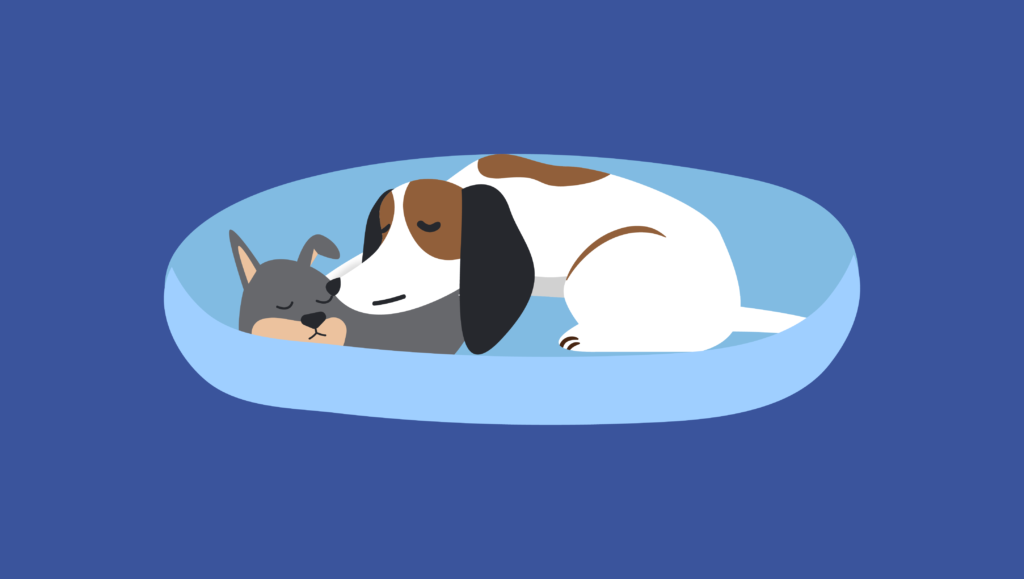
Burrowed
Some dogs prefer to sleep a little hidden. In the burrowing position, “a pet sleeps while either partially or fully burrowed under the covers or bedding,” explains Rutherford. She says it could help them stay warm, which might make it particularly appealing to dogs with thinner coats. “It also may bring comfort to a pet when adjusting to a new environment or dealing with anxiety about their surroundings.”
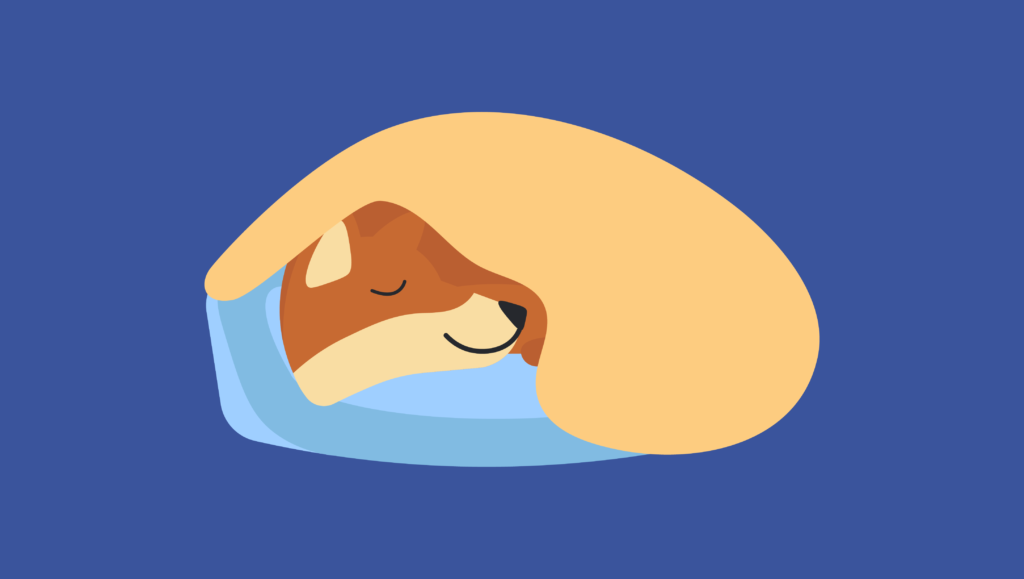
Belly Up
This comical dog sleeping position is when a dog sleeps on her back with all four legs in the air and that soft belly exposed. “This means that the dog is comfortable and relaxed in its environments and trusting of their surroundings,” Rutherford says. “Dogs who feel safe in their homes and comfortable with the people around them may often find themselves sleeping in this position.”
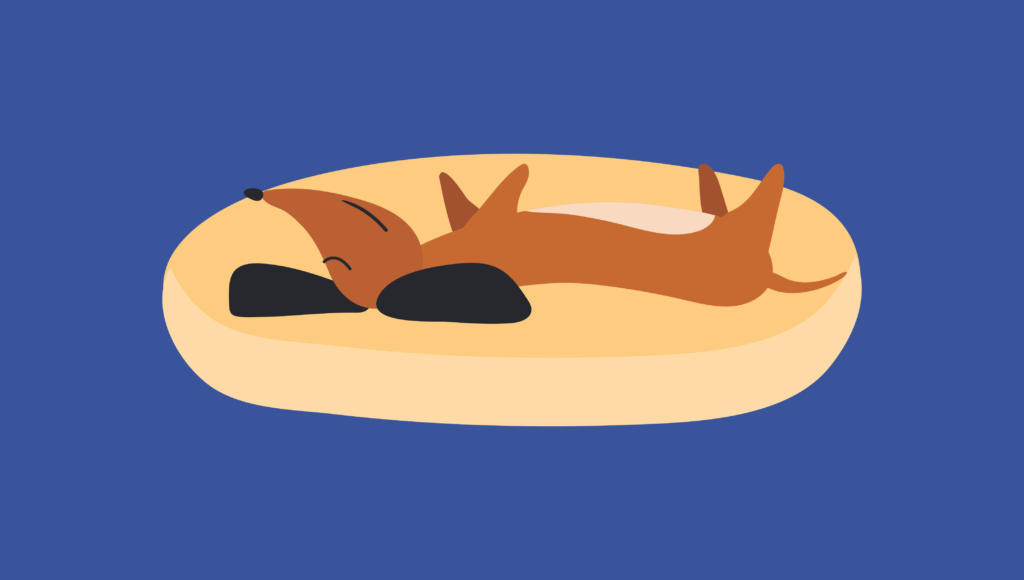
Back to Back
If you share your bed with your dog, you might be familiar with this sleeping position. “This is when a dog sleeps with their back pressed as closely as possible to their owner or another pet,” says Rutherford. It’s a sleeping position that indicates a high level of trust and comfort. “Dogs looking to build a bond with their owner or housemate may sleep in this position.”
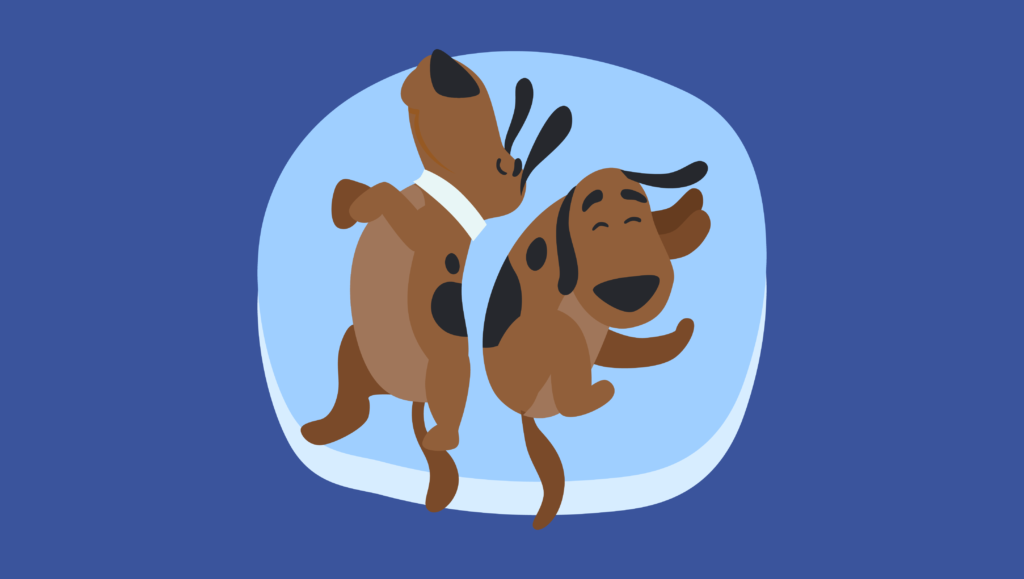
Sprawled Out on the Tile
Ever watched your dog stretch out flat on the cool tile after a long walk? The goal is to cool themselves down by maximizing that skin-to-surface ratio. A dog in this position should have access to plenty of cool water. At night, make sure to open a window, use a fan, or turn on the air conditioner to ensure your dog stays comfortable. Dogs with long hair should also be regularly groomed and trimmed in the warmer months.

If you’re looking to remember the meaning behind these common sleep positions later, check out our infographic:

Other Bedtime Behaviors, Explained
Funny dog sleep positions aside, you may have noticed that your dog has other sleep habits, too. From soft woofs to twitching paws to that frantic digging some dogs do before they lie down, here’s what’s going on.
Circling
Before settling down to sleep, you may notice your dog turns in circles or digs into the couch pillows or his dog bed. Both are likely inherited behaviors from wolf ancestors. “Wolves often circle before lying down to evaluate the safety of their sleeping site, uncover any hidden predators and make sure they’re sleeping in a safe position to ward off predators,” explains Rutherford. Today’s dogs may still exhibit this behavior. “In a bed, this may also help them create a comfortable sleeping environment before settling down,” she says.
There’s one important caveat, she says. “Dogs dealing with pain, particularly arthritic pain, may circle longer before laying down as they are trying to find a comfortable position before settling.”
Yawning
Ever notice your dog yawning? It’s more than just a sign that she’s ready for a nap. “Yawning often helps to calm dogs who may be dealing with anxiety, frustration or stress,” says Rutherford. “This can happen when they feel overwhelmed or are anticipating an intense or stressful event.”
But if your dog is stretched out and comfy, yawning can merely be a sign that they’re tired.
Signs of Dreaming
Dr. Rutherford says there are a few indications your dog may be gallivanting through dreamland. “They often have rapid eye movements from side to side,” she explains. “Their breaths will often become shallower and more rapid, and they will likely have leg twitches or body movements while dreaming. This can look like running or paddling at times, and they can even vocalize while dreaming.” And those little twitches, whines, and barks are typically a sign of deep sleep.
How Much Should My Dog Sleep?
A dog’s sleep needs are based on factors like age, health, activity level, even personality. But in general, adult dogs will spend between 10 and 12 hours sleeping (yes, that’s half the day!). Puppies and senior dogs will sleep even more.
“Many young puppies who spend a large part of their day exploring their new surroundings need a lot of time to recover, and they can often sleep up to 18+ hours daily,” says Rutherford. Senior dogs may snooze between 18 and 20 hours a day too — they also tire more easily and need extra time to recover.
Where Should My Dog Sleep?
Just like people, dogs do well with a dedicated sleep space that’s quiet, dark, and comfortable. According to the American Society for the Prevention of Cruelty to Animals (ASPCA), dogs should sleep in a warm spot away from drafts and off the floor, such as in a dog bed or crate.
Whether or not dogs should sleep in their owner’s bed is a matter of eternal debate. According to the American Kennel Club, sharing your bed with a well-behaved and well-adjusted dog really isn’t an issue. The biggest drawback is a greater potential for sleep disturbances, but the same can be true for parents who co-sleep with a small child. In fact, one study on multi-species co-sleeping likened sleeping with a dog to sleeping with a child!
The Last Word From Sleepopolis
Now that you know the meaning behind common dog sleeping positions, pay attention to how your dog prefers to snooze for a little insight into what’s going on between those fuzzy ears! Plus, being familiar with your dog’s sleep habits is an easy way to stay clued into their general health.


























